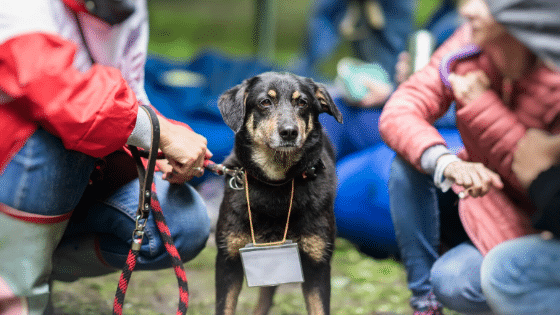Amidst everything that has been going on and put in place to protect people around the world during the Coronavirus outbreak, we are hopeful and optimistic that the time will come where people return to their daily lives. For our friendly animal welfare organizations that have been working against adversity, cuts in staff and volunteer programs, and working diligently to raise funds to continue to operate during this difficult time, have hope knowing that you will be back doing what you do best very soon!
Some states and regions are preparing to reopen their communities in phases, which raises some concerns with how to slowly and safely begin phasing your organization back into semi-regular operations. While it will take some time for operations at your organization and others alike to return to pre-COVID operation levels, approaching your first steps in reintroducing staff, volunteers, and programs in a safe and timely manner will be crucial. To help guide you and your organization’s approach to reintroducing these elements into your operations as lockdown restrictions are diluted, and even after they are fully lifted, we’ve come up with a few recommendations below to consider during your approach.
Assess Current Operations and Programs
Your operations and programs may be coming back in a vulnerable state. What “was” occurring in your normal operations and programs before COVID-19 may not be what “is” occurring by the time you and your organization begin to phase back into a state of normalcy. Assessing the current state of your operations and programs before you start reintroducing them will help you understand the current health status of these elements. Assess what is currently available in these elements (resources, time, etc.), how volatile and versatile they are, and impose guidelines as to how to introduce these elements back into your organization in phases based on your assessments.
Evaluate Your Assets and Resources
The assets and resources your organization had, whether small or large, may have been dealt with a hefty blow during COVID-19. As you take the first steps into reopening and reintroducing staff back into your programs and operations, evaluate the WHOs and WHATs that are currently available to you (i.e. employees, volunteers, animals, funds, etc.). Compile a detailed list of these assets and resources and organize them in a way that conveys what and who is most available, important, or vital to reintroducing first back into your operations. Keep in mind which of these elements will have a greater impact on the health and safety of all people in your organization, and how easy or difficult they will be to adapt to your reintroduction phase.
Evaluate Level of Human Interaction in Your Operations and Programs
No matter what, the health and safety of your organization’s staff, volunteers, and animals should be top priority. Reintroducing too much human interaction right out of the gate could put you and others at risk of potentially spreading the virus in your facility. Understanding the amount of human interaction (and even animal interaction) that will occur as you begin to phase back into your operations and programs will help you make decisions on when, where, and how many staff and volunteers you can safely bring into your facilities and programs during the reintroduction phase. As you assess where to start reintroducing your workforce, rank the level of human interaction that will occur in your operations on a scale of low to high, numeric scale, or another appropriate ranking system.
Create a Socially-Distanced Schedule
After you determine the WHOs and WHATs and the WHERE, WHEN, and HOW factors that will start to be reintroduced into your organization’s operations, scheduling around social distancing precautions will be essential. Keep all current social distancing guidelines and precautions in mind as you schedule who will be coming into your facility and buildings, when they will be coming and going, and how often. For smaller organizations that may not have a physical location, coordinating when, where, and how often you and your members will interact and communicate is recommended. As you implement these schedules, be sure to monitor them as closely and safely as you can to make sure your staff and volunteers are following proposed social distancing guidelines appropriately.
Create a Reintroduction Plan
Preparedness and precaution are key! Once you have appropriately evaluated the elements previously covered, compile your assessments and evaluations into a cohesive and well-detailed plan that will be carried out and followed to safely and appropriately reintroduce your operations, staff, and programs. This plan should outline what, when, how, and where these elements will be reintroduced, who is responsible for carrying out the plan, and the importance of safety while carrying out the plan. Share the plan with ALL members of the organization and have them acknowledge the plan by signing off that they have read and reviewed the plan in its entirety. Even a basic plan is better than no plan at all, but it is important that all members and stakeholders within the organization understand the importance of following the plan for their safety and the safety of others.
We eagerly want you and your organization to get back to doing what you do best: caring, loving, and advocating for our animal friends. However, most importantly, we want you to get back to doing what you do best SAFELY! It may be a rocky start at first but having a well thought out reintroduction plan will ultimately bring your organization back up to speed in no time. If you have any suggestions or questions, please feel free to reach out to us on social media or send us a message through our website!

